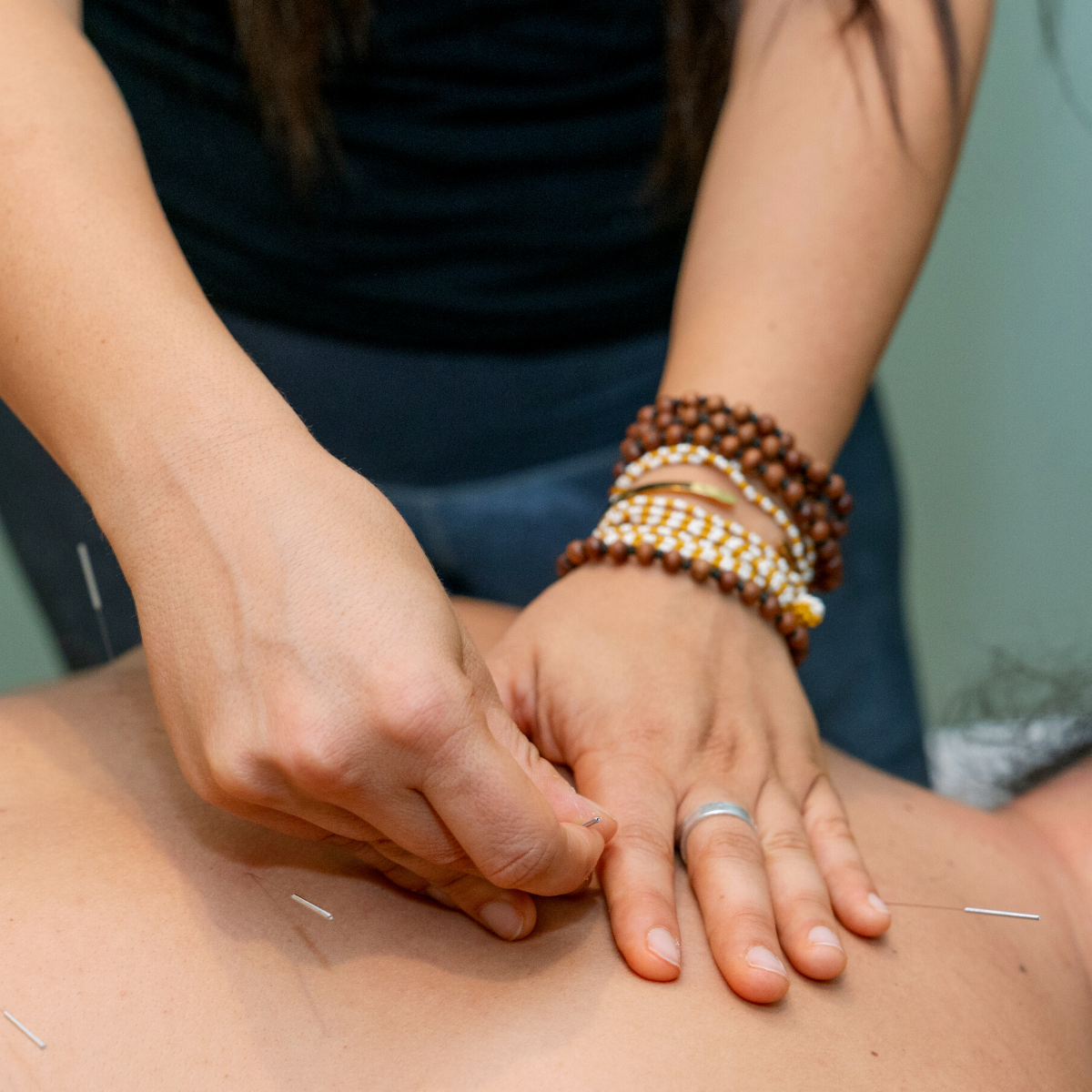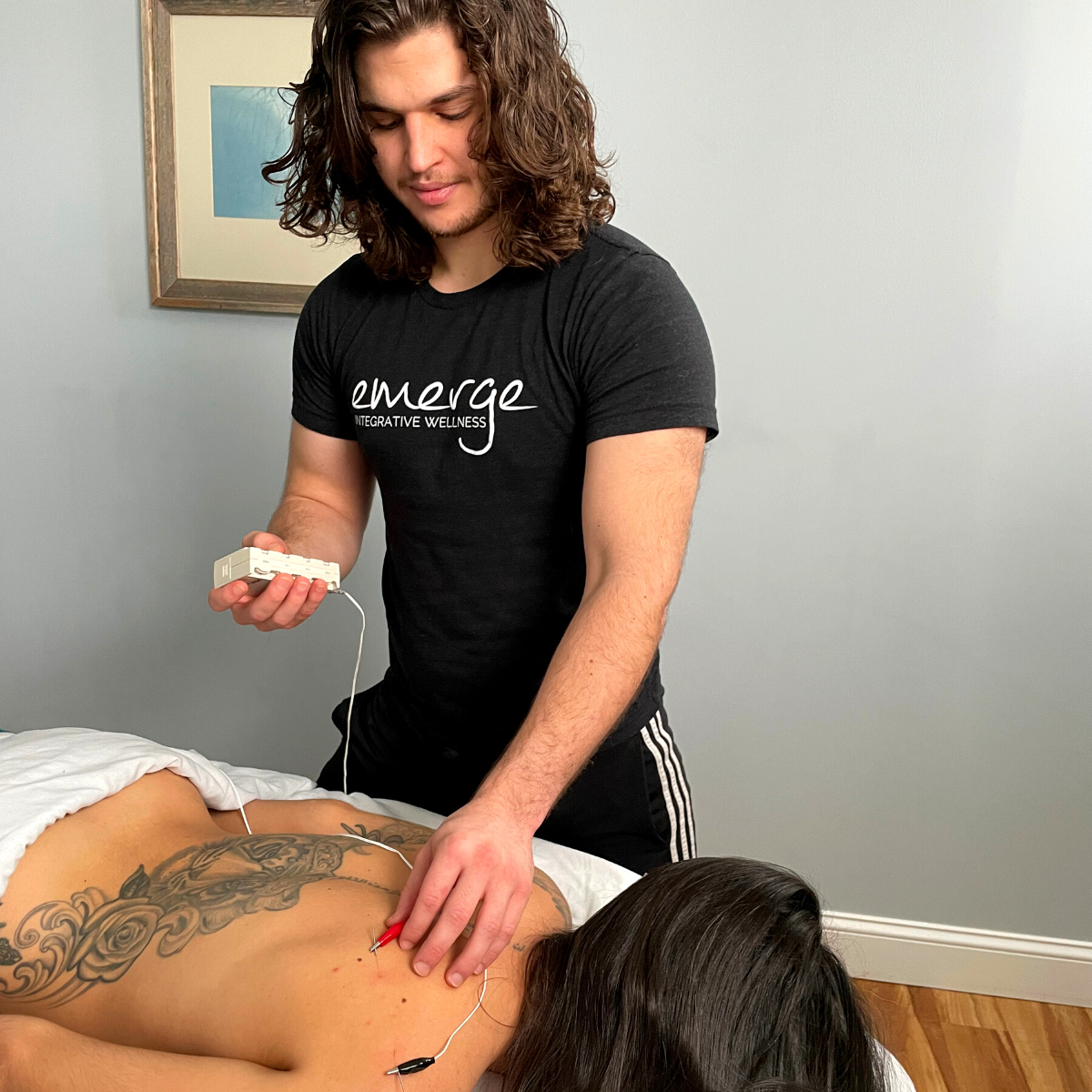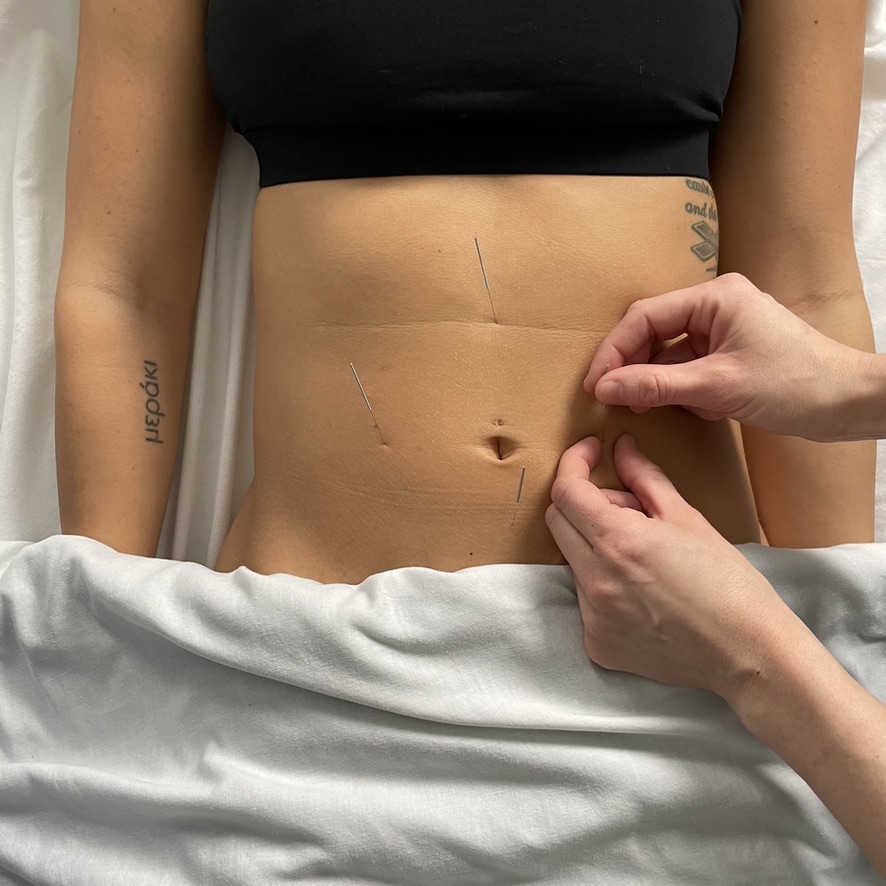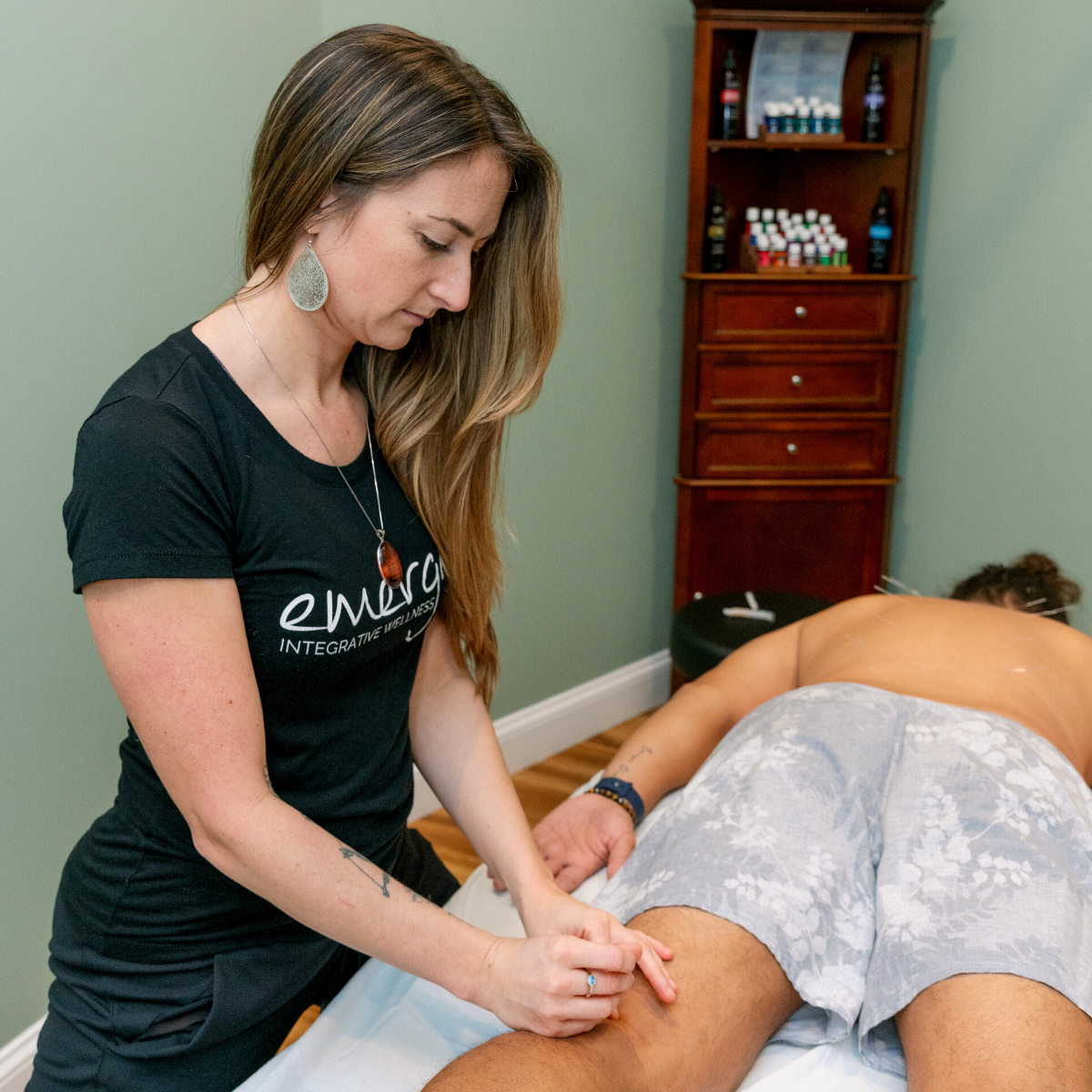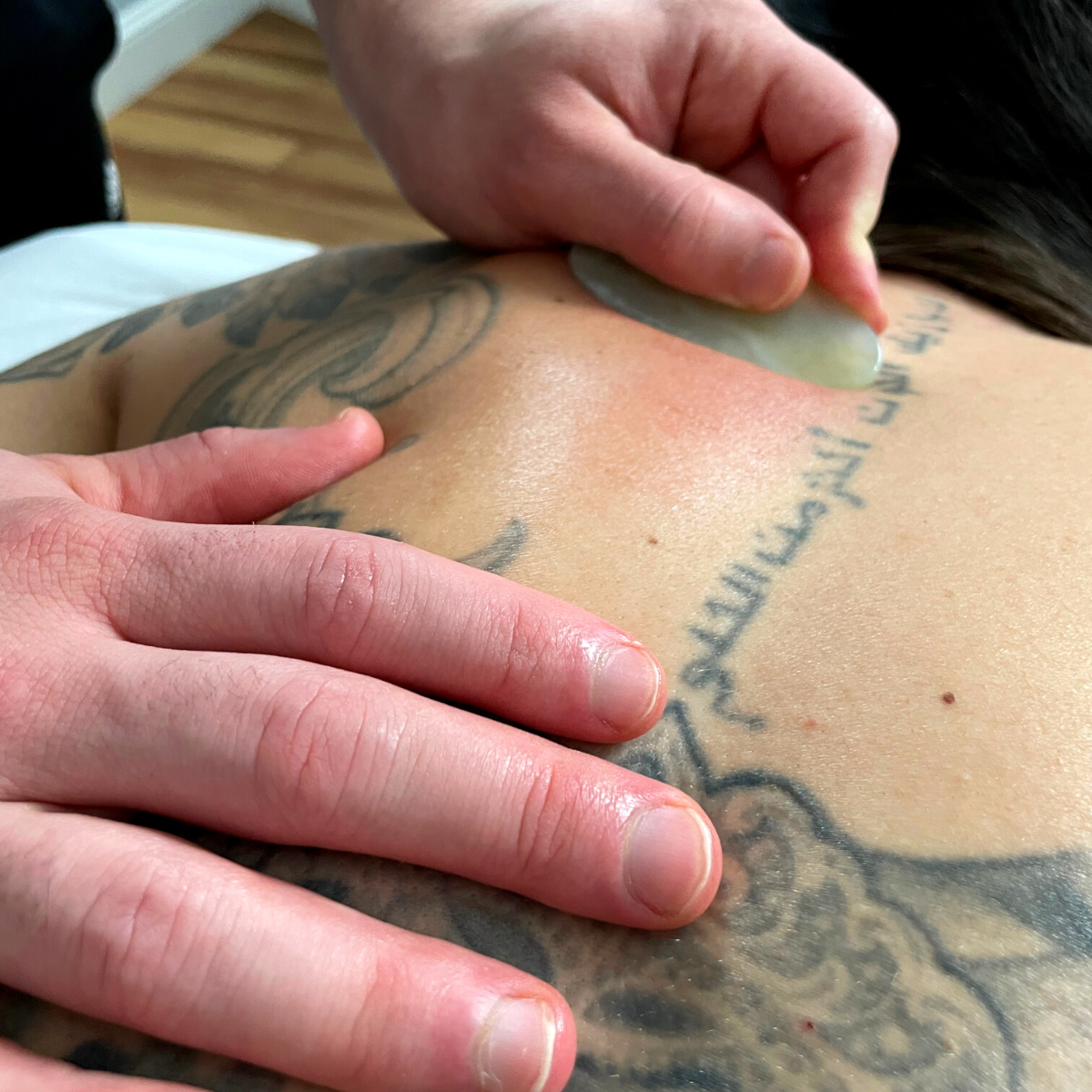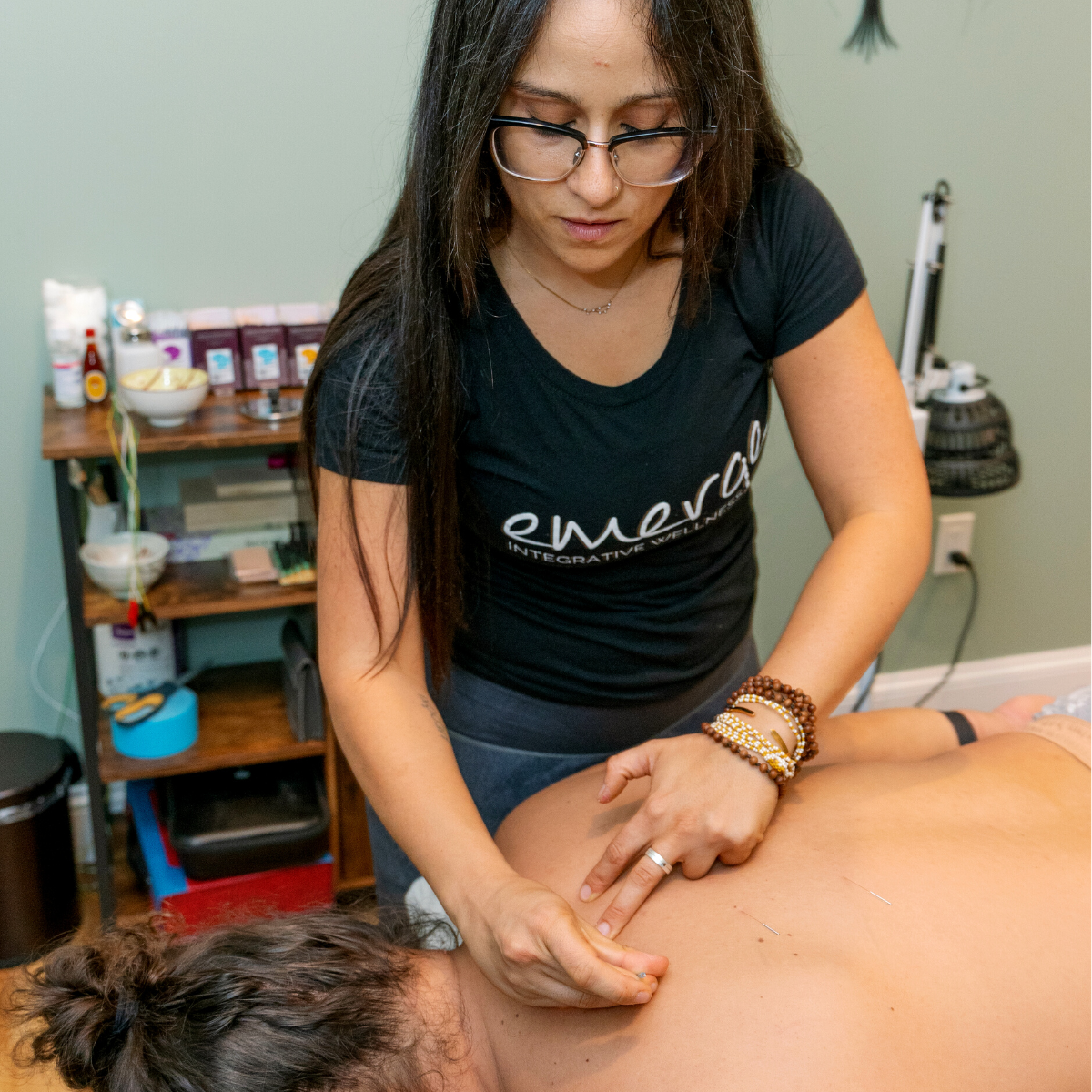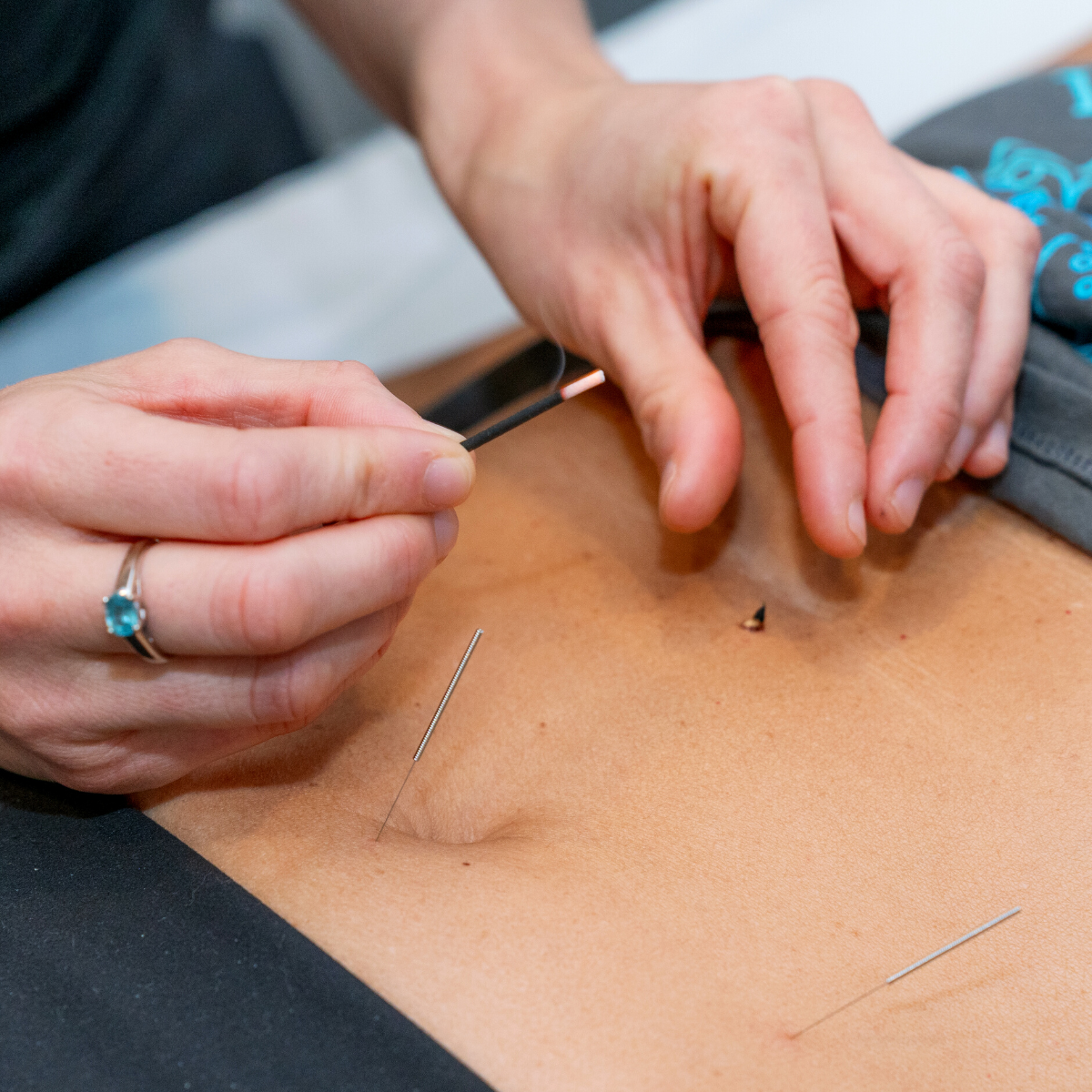Acupuncture and Traditional
Chinese Medicine (TCM)
Acupuncture is a Traditional Chinese Medicine (TCM) technique that involves inserting thin metal needles into the skin to stimulate the body’s self healing abilities. This modality combines ancient therapy with modern science.
In TCM, disease is linked with the flow of energy or Qi. When Qi gets disrupted, our energy becomes imbalanced. This causes pain to manifest in both the body and mind. Acupuncture uses specific points along the body’s energetic pathways to release stagnant Qi and restore homeostasis.
Each acupoint is located on precise areas of the skin. Insertion will stimulate our nerves, which then sends signals to the brain to release hormones to promote self-healing.
TCM treatments can alleviate many issues emotionally, mentally and physically simply by using the body’s innate ability to heal itself.

Traditional Chinese Medicine Uses More Than Just Needles
While people usually associate acupuncture [and TCM in general] with being poked by a bunch of needles, there are actually a variety of different tools and techniques used. Depending on what you come in for, other traditional techniques may be utilized to optimize benefits in your session.
Scroll through the slides to learn a little bit more about the tools and techniques you may experience in a TCM session!
CUPPING
Cupping is an ancient healing therapy that is used to stimulate blood flow, release toxins, and ease pain. A provider places cups on your back, stomach, arms, legs or other parts of your body. Inside the cup, a vacuum or suction force pulls skin upward. This suction force expands and breaks open tiny blood vessels (capillaries) under the skin. Your body treats the cupping area like an injury, and in turn sends more blood to the area to stimulate the natural healing process.
ELECTROACUPUNCTURE
Electroacupucnture [EA] a modern variation of acupuncture that uses electricity to enhance the benefits of this traditional therapeutic treatment. Needles are places in motor points [specific spots with the highest excitability of the muscle or the point on the skin where muscle contraction can be observed by the least electrical stimulation]. Then, a small electrode is attached to the needles to provide constant stimulation through the treatment. EA is excellent to enhance tissue repair and alleviate pain.
GUASHA
Guasha is a TCM healing method in which a trained professional scrapes your skin with a smooth edged tool to stimulate microcirculation of the soft tissue, which increases blood flow. This motion raises small, red, rash-like dots that show under your skin. Guasha is intended to address stagnant energy that may be responsible for inflammation. Rubbing the skin’s surface is thought to help release stagnation, reduce inflammation, and promote healing. Guasha is used to treat chronic pain, increase range of motion, and facilitate the release of toxic build up.
MOXIBUSTION
Moxibustion is a type of traditional Chinese medicine. It involves burning moxa, a cone or stick made of ground mugwort leaves, on or near your body's meridians and acupuncture points. The resulting heat helps stimulate these points and improves the flow of qi (energy) in the body. Moxa is highly effective in treating stagnation and pain syndromes including muscle stiffness and arthritis, as well as more internal syndromes including but not limited to: digestive issues, headaches, and GYN disorders.
SCHEDULE YOUR ACUPUNCTURE INITIAL CONSULTATION
All clients are required to make an Emerge account in order to schedule an appointment. Online health histories and intake forms will be e-mailed to you to fill out prior to your session. Click the button below to check if you have insurance coverage.
Acupuncture and Traditional
Chinese Medicine FAQ
What Should I Expect in An Initial Acupuncture Session?
Initial consults are about 1hr and are a combination of assessment, TCM diagnosis, and treatment.
Upon the initial visit, you will be asked various questions regarding your health history and overall wellness.
Your tongue and pulse may be examined for further indications as to the imbalances in your body.
You will then lay comfortably on a treatment table while precise acupoints are gently stimulated with thin, sterile, disposable needles.
Most people feel no discomfort. The needles are usually retained between 20-40 minutes, depending on the issues being targeted.
Adjunct modalities such as cupping, electroacupuncure, guasha, moxibustion, or traditional massage may be used to enhance the effects of treatment.
Follow up sessions are usually 30-60 minutes depending on the condition being treated.
How Does Acupuncture Work?
In Chinese medical theory, acupuncture works by balancing the body’s Qi. Qi can be described as a form of bioenergy that runs along meridians. If Qi gets blocked, it shows up as an imbalance or illness. Basically, if you have a health condition, some part of your body’s system is out of whack. Chinese medical theory allows us to diagnose the imbalance… and balance it.
In Western medical theory, acupuncture appears to work by stimulating parts of the brain. It also stimulates the body to release natural biomolecules such as neurotransmitters, vasodilators, and hormones. The exact mechanisms which bring this about are unknown, but the effects are measurable.
How Often Will I Need Treatment?
The frequency of treatment depends on your medical condition.
Many conditions respond faster to frequent acupuncture treatments, while other patients only need to come in once a week.
Benefits are cumulative, and you will see the effects begin to last longer with frequent treatments. Once your condition is stabilized, you won’t need to come in as often.
When you come in for your first session, we’ll formulate a specific treatment plan that is best for you.
Is Acupuncture Safe?
Acupuncture is widely acknowledged as one of the safest forms of medicine. Acupuncture needles are pre-sterilized, individually packaged, and disposable. Acupuncturists undergo extensive training and are regulated by the individual states’ medical board.
One of the greatest advantages of acupuncture is that it has virtually no side effects. Occasionally a small temporary bruise may appear at the site of an acupuncture needle. When compared to the laundry list of cautions and side effects for the average pharmaceutical drug, acupuncture is very low risk!
Do You Take My Insurance?
Depending on your insurance plan, you may have out-of-network coverage for acupuncture. Some plans that usually have acupuncture benefits include NYSHIP, UnitedHealthcare, BlueCross BlueShield, and Aetna. Simply call the front desk for more information on insurance and out-of-pocket rates. Click Here to be redirected to our insurance verification page to check if you have out of network benefits.

